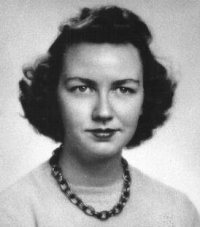A couple Wednesdays ago, I ventured to the far north side of Indianapolis to attend a “book discussion group’ (is there a difference between that and a book club?) meeting at the Carmel Public Library. The book to be discussed was Flannery O’Connor’s “A Good Man is Hard to Find and other stories.” Up until a few weeks ago, the only O’Connor I had read was the famous title story, which seems ubiquitous among the many short story anthologies that I’ve read. Viewed by itself, that particular story is pretty strange, and if I were left with that as my only exposure to O’Connor I would much likely have an altogether different opinion of her than I do today.
Reading a collection of her stories taught me that the morbidity I encountered in A Good Man is Hard to Find is part of her writing style, and the more stories I read, the more I got used to it and began to expect how the stories might turn out. A common theme is that many characters generally begin pretty sure of themselves and their view of the world, which later becomes shattered by degrees or sometimes in one fell swoop. This collection contained ten stories, primarily in the 12-20 page length, with one longer one of about thirty-five pages.
I learned also, that O’Connor was a master of the simile, sometimes “one-liners” and sometimes a bit more lengthy. A few favorite examples:
“(he was) frail as a dried spider”
“(they were) as silent as thieves hiding.”
“(his) stare seemed to pinch her like a pair of tongs.”
“his knees worked like old hinges.”
“The graduates in their heavy robes looked as if the last beads of ignorance were being sweated out of them.” “She looked at nice young men as if she could smell their stupidity.”
“His mind had frozen around his grandfather’s treachery as if he were trying to preserve it intact to present at final judgment.”
“(his eyes) were alert but quiet…as if they belonged to one of the great guides of men. He might have been Vergil summoned in the middle of the night to go to Dante…”
Aren’t those great? I also enjoyed some of the names that she assigned the characters, which often reflected their natures. There may for instance be found among them a Mrs. Hopewell, and a Mrs. Cope. Other names are less thinly veiled, like a Mr. Shiftley, who is indeed “shiftless.”
All in all, I enjoyed the stories and the discussion. Though a large group (nineteen!), every one was well behaved and willingly listened to the opinions of others. I learned that they meet the first Wednesday of every month, and I hope to “go back for more.” They’re next reading the best selling novel, Cutting for Stone, and I’m already about a hundred pages into that one (I’m reading it concurrently with my own book club’s August book, The Historian, and, at this point anyway, Cutting for Stone is “winning”…)
One other quick note regarding something that reading O’Connor has made me think of: the author lived a relatively short life, dying when she was only 39, and the body of her work consists only of two novels and two collections of short stories (of which – the latter format – she is widely recognized as one of the masters). I thought that, unlike many other favorite authors, her “oeuvre” is manageably finite. I.e. One could read all she wrote and even become an “expert” or scholar of her work much more easily than other more prolific authors.
How about you all? Have you experienced Flannery O’Connor’s stories? What do you think of them?
P.S. I just realized I didn’t even talk about the omnipresent religious themes in her work. I suppose that would have to be a topic for another, much longer post… 🙂
below: Flannery O’Connor’s trademark bird…

